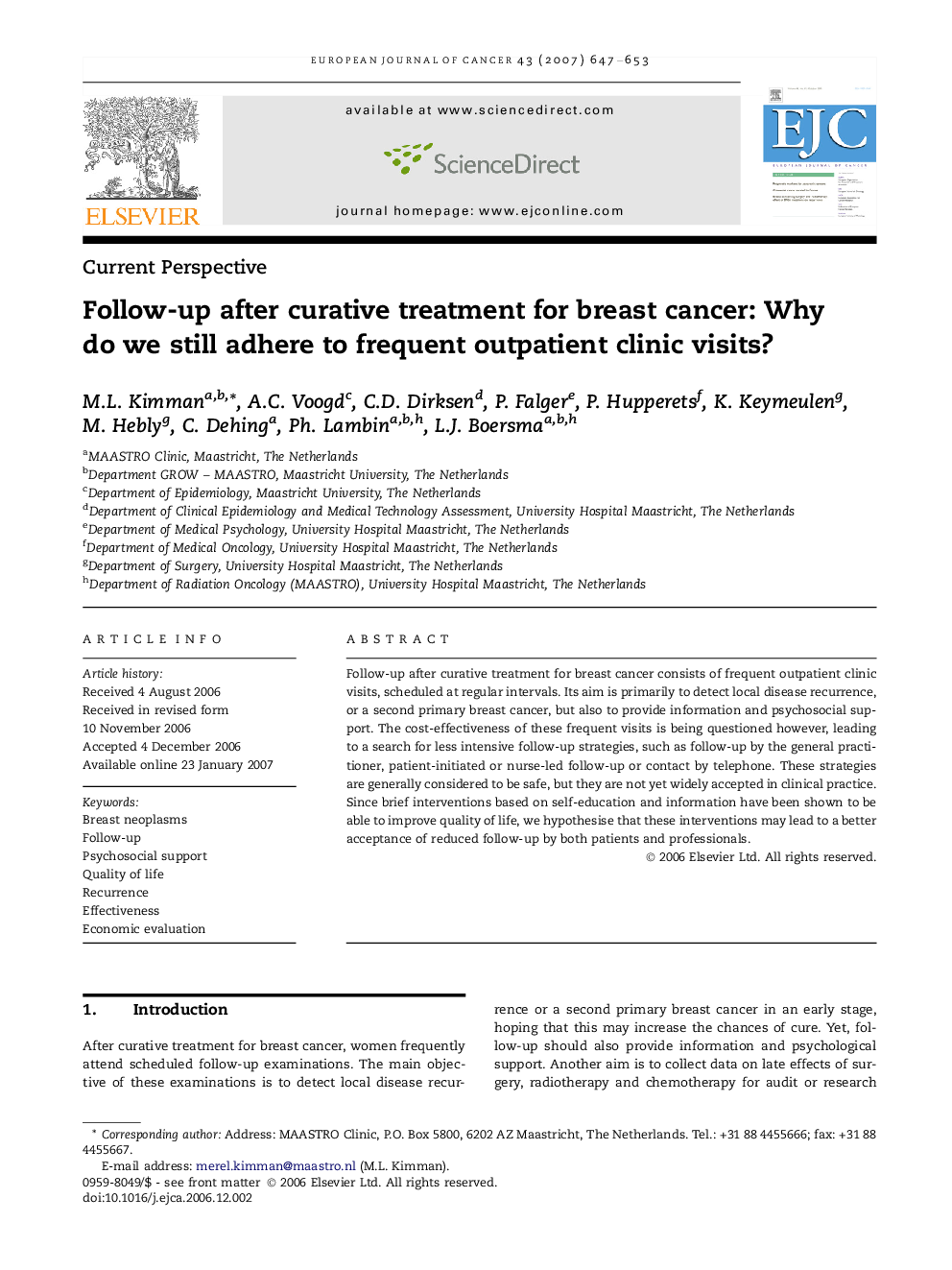| Article ID | Journal | Published Year | Pages | File Type |
|---|---|---|---|---|
| 2124637 | European Journal of Cancer | 2007 | 7 Pages |
Follow-up after curative treatment for breast cancer consists of frequent outpatient clinic visits, scheduled at regular intervals. Its aim is primarily to detect local disease recurrence, or a second primary breast cancer, but also to provide information and psychosocial support. The cost-effectiveness of these frequent visits is being questioned however, leading to a search for less intensive follow-up strategies, such as follow-up by the general practitioner, patient-initiated or nurse-led follow-up or contact by telephone. These strategies are generally considered to be safe, but they are not yet widely accepted in clinical practice. Since brief interventions based on self-education and information have been shown to be able to improve quality of life, we hypothesise that these interventions may lead to a better acceptance of reduced follow-up by both patients and professionals.
